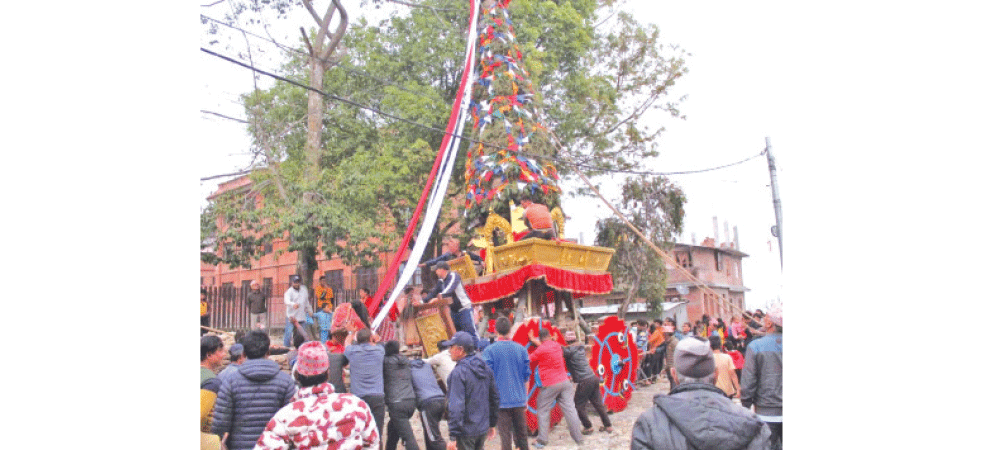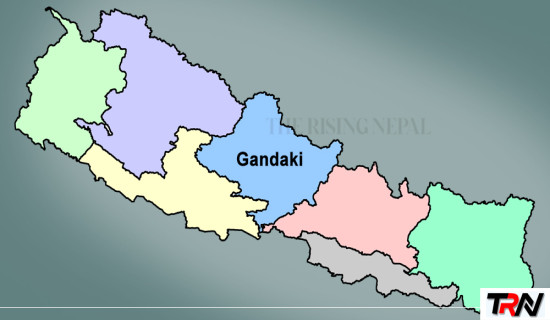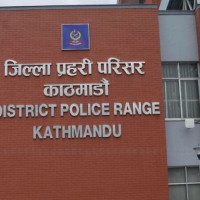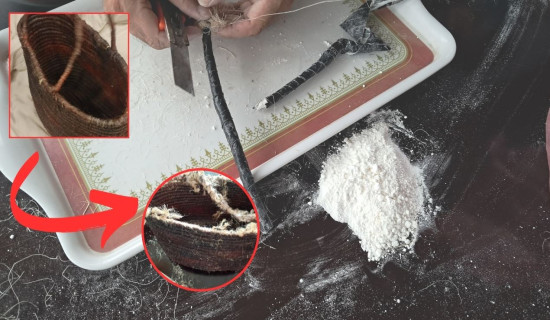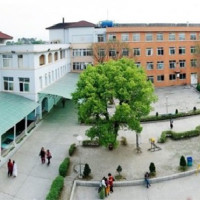- Saturday, 2 August 2025
Rato Machhindranath Jatra concludes in Dolakha
By Our Correspondent,Dolakha, Apr. 15: The one-week long Rato Machhindranath Jatra of Dolakha district concluded on Friday. The festival had started on April 6.
Said to have been celebrated continuously for almost 500 years, the Jatra begins by bathing the Rato Machhindranath idol with milk on the first day.
On the second day, on April 7, the statue of Rato Machhindranath was placed in the chariot kept in Pingal Tole, a village in Bhimeshwor Municipality of the district. Then the chariot was taken to different places.
"The chariot was pulled up to Nakchhe on April 7. On April 9, it was pulled up to Shyam Sundar Tole. It was then taken up to Tansicha on April 10 and up to Mathillo Tole on April 11. In the route to Mathillo Tole, there is a steep slope due to which the chariot is pulled at 360 degrees," said Jeevan Shrestha, a local.
On April 12, the chariot reached Dungal and was returned to Pingal on April 13. The chariot reached Daklunga Tole on the first day of the Nepali New Year, which was marked on Friday, April 14, before it concluded formally.
While it is not certain when the Jatra started, the date 1638 BS is carved on the deity's golden throne which indicates that it might have been donated that year.
Legends have it that King Narendra Dev had introduced the Jatra to bring Guru Machhindranath to Nepal in order to wake Guru Gorakhnath from meditation.
Guru Gorakhnath was said to have been angry with the locals due to which there had been no rain for years.
King Narendra Dev, Acharya Bandhu Dutta and Lalit Jyapu went to Kamrup Assam in India. Through a tantrik medium, Machhindranath was contacted and Lalit had carried Machhindranath to the Kathmandu Valley and established the Bungmati Temple.
Gorakhnath then woke up with the blessings of Machhindranath and it started to rain. Then, the temple of Machhindranath, who is also the god of rain, was established in Patan as well and the Jatra was started annually.
Similarly, there is another belief that the Rato Machhindranath of Lalitpur, also known widely as Karunamaya, is worshipped by Hindus as the God of rain Loknath and by Buddhists as Boddhisatva Avalokiteshwor.
The God was brought to Dolakha by the then King Nandadev Singh on the 13th day of the bright half of the Nepali month of Baisakh in the Nepal Sambat year 639, on a Monday.
As stated in a local copper inscription, the King, through the help of Mahaguru Dev Bajracharya, used a young girl from Bungamati to bring Machhindranath to Dolakha and consecrated the Lord at a holy residence in Doklunga. After this, he also started the chariot festival.
Later, King Basudev provided land to the Thamis of Lapilang area to support the construction of the Machhindranath chariot. The Thamis used to come to Dolakha every year and build the conical carriage out of wood and bamboo and decorated it with colourful flowers and leaves. They also used to construct the four wheels and the Dhama wood used to tie the ropes
of the chariot.

